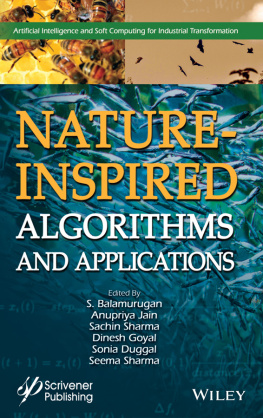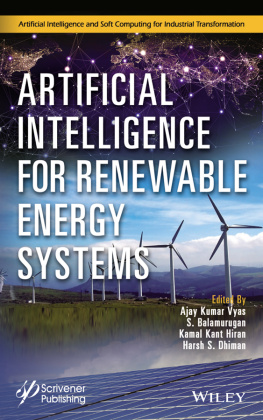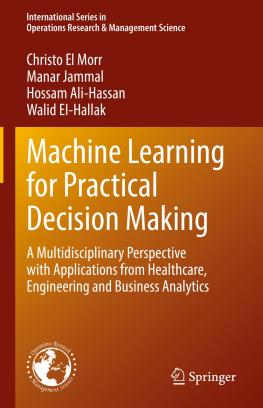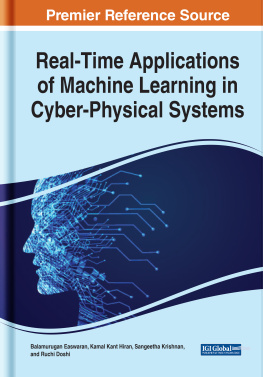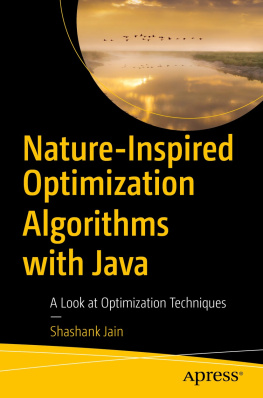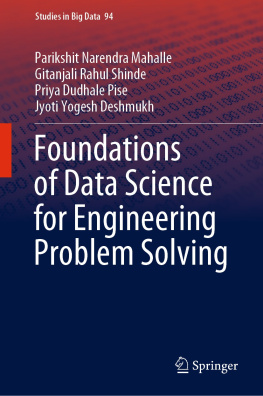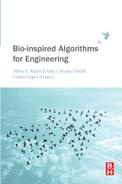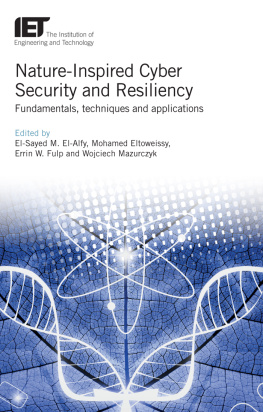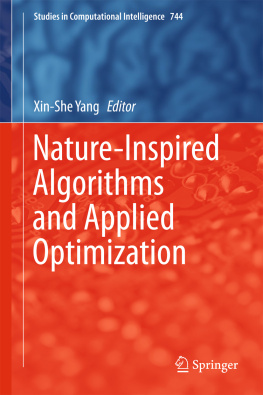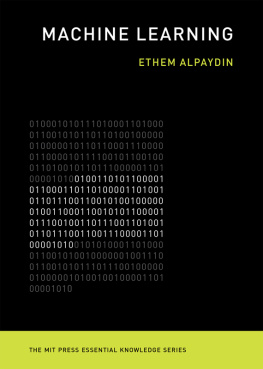
Scrivener Publishing
100 Cummings Center, Suite 541J
Beverly, MA 01915-6106
Artificial Intelligence and Soft Computing for Industrial Transformation
Series Editor: Dr S. Balamurugan ()
Scope: Artificial Intelligence and Soft Computing Techniques play an impeccable role in industrial transformation. The topics to be covered in this book series include Artificial Intelligence, Machine Learning, Deep Learning, Neural Networks, Fuzzy Logic, Genetic Algorithms, Particle Swarm Optimization, Evolutionary Algorithms, Nature Inspired Algorithms, Simulated Annealing, Metaheuristics, Cuckoo Search, Firefly Optimization, Bio-inspired Algorithms, Ant Colony Optimization, Heuristic Search Techniques, Reinforcement Learning, Inductive Learning, Statistical Learning, Supervised and Unsupervised Learning, Association Learning and Clustering, Reasoning, Support Vector Machine, Differential Evolution Algorithms, Expert Systems, Neuro Fuzzy Hybrid Systems, Genetic Neuro Hybrid Systems, Genetic Fuzzy Hybrid Systems and other Hybridized Soft Computing Techniques and their applications for Industrial Transformation. The book series is aimed to provide comprehensive handbooks and reference books for the benefit of scientists, research scholars, students and industry professional working towards next generation industrial transformation.
Publishers at Scrivener
Martin Scrivener ()
Phillip Carmical ()
Nature-Inspired Algorithms Applications
Edited by
S. Balamurugan,
Anupriya Jain,
Sachin Sharma,
Dinesh Goyal,
Sonia Duggal
and
Seema Sharma

This edition first published 2022 by John Wiley & Sons, Inc., 111 River Street, Hoboken, NJ 07030, USA and Scrivener Publishing LLC, 100 Cummings Center, Suite 541J, Beverly, MA 01915, USA
2022 Scrivener Publishing LLC
For more information about Scrivener publications please visit www.scrivenerpublishing.com.
All rights reserved. No part of this publication may be reproduced, stored in a retrieval system, or transmitted, in any form or by any means, electronic, mechanical, photocopying, recording, or otherwise, except as permitted by law. Advice on how to obtain permission to reuse material from this title is available at http://www.wiley.com/go/permissions.
Wiley Global Headquarters
111 River Street, Hoboken, NJ 07030, USA
For details of our global editorial offices, customer services, and more information about Wiley products visit us at www.wiley.com.
Limit of Liability/Disclaimer of Warranty
While the publisher and authors have used their best efforts in preparing this work, they make no representations or warranties with respect to the accuracy or completeness of the contents of this work and specifically disclaim all warranties, including without limitation any implied warranties of merchantability or fitness for a particular purpose. No warranty may be created or extended by sales representatives, written sales materials, or promotional statements for this work. The fact that an organization, website, or product is referred to in this work as a citation and/or potential source of further information does not mean that the publisher and authors endorse the information or services the organization, website, or product may provide or recommendations it may make. This work is sold with the understanding that the publisher is not engaged in rendering professional services. The advice and strategies contained herein may not be suitable for your situation. You should consult with a specialist where appropriate. Neither the publisher nor authors shall be liable for any loss of profit or any other commercial damages, including but not limited to special, incidental, consequential, or other damages. Further, readers should be aware that websites listed in this work may have changed or disappeared between when this work was written and when it is read.
Library of Congress Cataloging-in-Publication Data
ISBN 978-1-119-68174-8
Cover image: Pixabay.Com
Cover design Russell Richardson
Set in size of 11pt and Minion Pro by Manila Typesetting Company, Makati, Philippines
Printed in the USA
10 9 8 7 6 5 4 3 2 1
Preface
Inspired by the world around them, researchers are gathering information that can be developed for use in areas where certain practical applications of nature-inspired computation and machine learning can be applied. This book was designed to enhance the readers understanding of this process by portraying certain practical applications of nature-inspired algorithms (NIAs) specifically designed to solve complex real-world problems in data analytics and pattern recognition by means of domain-specific solutions. Since various NIAs and their multidisciplinary applications in the mechanical engineering and electrical engineering sectors; and in machine learning, image processing, data mining, and wireless networks are dealt with in detail in this book, it can act as a handy reference guide. A brief description of the topics covered in each chapter is given below.
- In , Introduction to Nature-Inspired Computing, Dr. N. M. Saravana Kumar, K. Hariprasath, N. Kaviyavarshini and A. Kavinya introduce a new discipline that strives to develop new computing techniques through observing how naturally occurring phenomena behave to solve complex problems in environmental situations. Characterization of nature-inspired algorithms are also discussed.
- In , Applications of Hybridized Algorithms and Novel Algorithms in the Field of Machine Learning, Dr. P. Mary Jeyanthi and Dr. A. Mansurali introduce various hybridized algorithms in the field of machine learning (ML) along with their applications. This chapter emphasizes the characteristics of a genetic algorithm (GA) which helps machine learning in GAs consideration of genes (variables).
- In , Efficiency of Finding Best Solutions Through Ant Colony Optimization (ACO) Technique, Dr. K. Sasi Kala Rani and N. Pooranam address the challenges faced in tourism when a planned vacation to a specific destination is challenged by unforeseen events like adverse climate conditions that threaten to derail the trip. In this case, an optimal solution is generated by using heuristic value and an ACO algorithm in which the continuous orthogonal ant colony (COAC) method helps to solve real-world problems.
- In , A Hybrid Bat-Genetic Algorithm-Based Novel Optimal Wavelet Filter for Compression of Image Data, Renjith V. Ravi and Kamalraj Subramaniam explain how three modules, namely optimized transformation module, compression and encryption module and receiver module, are used. Initially, the input image is sub-band coded using hybrid bat-genetic algorithm-based optimized DWT. Subsequently, the encoding using SPIHT and chaos-based encryption is carried out. In receiver module, the received signal from the AWGN channel is demodulated, decrypted and de-compressed to obtain the estimated image. From the results, we can infer that the use of the proposed filter and technique has produced better image quality when compared to existing techniques.
- In , A Swarm Robot for Harvesting a Paddy Field, N. Pooranam and T. Vignesh discuss how the harvesting process can be improved in a positive way by using the PSO-based swarm intelligent algorithm to help in searching for and optimizing the process. The harvesting process has several steps: Reaping (cutting), threshing (separating process), and cleaning (removing non-grain material from grains). The PSO algorithm will find the positions of all robots to start harvesting and crust-based PSO will help to improve the optimization.
Next page
